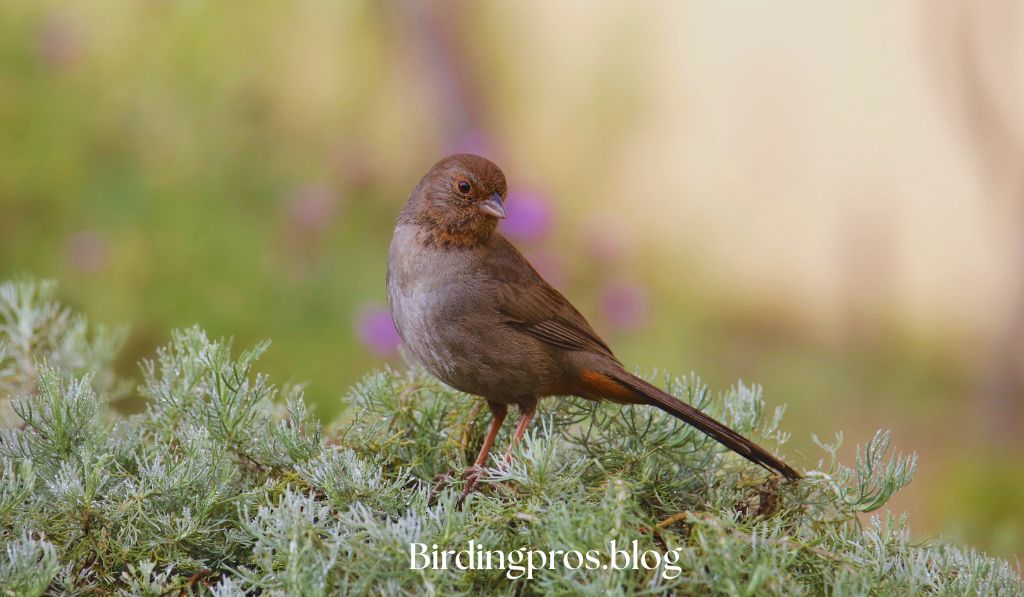Explore the fascinating world wide of endangered birds in North America and find out the maximum seriously endangered avian species on the continent.
Learn about conservation efforts, recuperation packages, and the way you may contribute to shielding the ones dazzling creatures from extinction.
Table of Contents
ToggleThe Crisis Facing North American Avifauna
Birdwatching has advanced from a casual interest into an essential tracking system for our planet’s ecological health.
Within North America’s diverse avian panorama, species have ended up alarmingly scarce, serving as essential symptoms of environmental degradation and the urgent want for conservation intervention.
These endangered birds captivate researchers, conservationists, and natural world fanatics no longer only for their rarity however moreover for what they constitute: ecosystems at random.
The tale of those uncommon birds illuminates the wider environmental challenges we are going through and gives a compelling case for instant movement to hold biodiversity.
This complete guide examines North America’s most endangered avian species, their precise habitats, specialised diets, distinct vocalizations, and the massive conservation efforts geared in the path of stopping their extinction.
North America’s Vanishing Bird Populations

The decline in North American fowl populations has reached catastrophe proportions.
A landmark 2019 report in the mag “Science” discovered a top notch lack of almost three billion birds all through the continent because of the reality of 1970—representing a 29% discount in the average chook populace.
This dramatic decline spans numerous species, from common outside website online site visitors to significantly endangered experts.
Understanding the number one drivers of this avian disaster is critical for developing effective conservation techniques and reversing the ones alarming tendencies.
Key Factors Driving Bird Endangerment
The number one threats pushing North American birds in the direction of extinction embody:
- Habitat Destruction:
Widespread urbanization, business agriculture, and commercial logging have decimated important habitats sooner or later of the continent.
Birds with specialized habitat necessities—mainly the ones relying on antique-increased forests, pristine wetlands, or neighborhood grasslands—face the great chance as these ecosystems disappear.
- Climate Change Impacts:
Rising temperatures, altered precipitation styles, and an increasing number of excessive weather activities disrupt breeding cycles, migration timing, and food availability.
These adjustments have created ecological mismatches that many bird species can not adapt to.
- Environmental Toxins:
Pesticides, industrial pollutants, and plastic contamination have infiltrated ecosystems nationally, inflicting reproductive disasters, immune device harm, and direct mortality.
Lead poisoning from ammunition stays a big chance to scavenging species.
- Invasive Species:
Non-local vegetation and animals brought by using the usage of human interest regularly outcompete or directly prey upon native birds, disrupting ecological relationships that evolved over millennia.
Invasive predators like feral cats and rats have devastated floor-nesting bird populations.
These interconnected factors have created an extraordinary storm threatening avian biodiversity during North America, necessitating whole conservation efforts at multiple scales.
Critically Endangered Birds of North America
Following are the endangered birds of North America.
California Condor (Gymnogyps californianus)

The California Condor stands as North America’s biggest land bird and represents one of the continent’s maximum dramatic conservation stories.
This surprising vulture, with its exquisite nine.Five-foot wingspan, once soared at some point of the western United States, from British Columbia to Baja California.
By 1982, habitat loss, lead poisoning from ingested bullet fragments, and planned taking pics had reduced the whole wild population to genuinely 22 humans.
In a final-ditch conservation effort, herbal worldwide managers captured all last condors for an in depth captive breeding software.
Through meticulous breeding protocols, veterinary care, and innovative reintroduction techniques, the California Condor populace has grown to over 500 birds as of 2025, with about three hundred flying free in California, Arizona, Utah, and Baja California.
Despite this notable recovery, the species stays critically endangered, with ongoing threats from lead ammunition, energy line collisions, and microtrash ingestion.
Attwater’s Prairie Chicken (Tympanuchus cupido attwateri)

The Attwater’s Prairie Chicken represents in reality one in all North America’s maximum endangered birds and a poignant example of grassland habitat loss.
This one-of-a-type grouse subspecies, recognized for its unexpected courtship, once numbered almost one million birds during 6 million acres of coastal prairie in Texas and Louisiana.
Today, fewer than a hundred wild humans persist on blanketed reserves, representing less than 1% of their historic population.
The catastrophic decline resulted specially from agricultural conversion of native grasslands, accompanied by urban improvement, invasive species encroachment, and genetic isolation.
Conservation efforts embody captive breeding at seven zoological facilities, habitat recovery duties, and predator control applications.
Despite those tremendous interventions, the Attwater’s Prairie Chicken stays perilously close to extinction, highlighting the disturbing situations of retaining species with complicated habitat requirements.
Ridgway’s Rail (Rallus obsoletus)

The Ridgway’s Rail (formerly called the California Clapper Rail) inhabits coastal salt marshes alongside the Pacific, with the endangered California subspecies limited to San Francisco Bay and several southern California estuaries.
These secretive birds rely upon dense marsh flora for nesting, foraging, and protection from predators.
Extensive wetland development has destroyed approximately 90% of their ancient habitat.
The final populations face threats from invasive cordgrass converting marsh form, pollutants in estuarine waters, and growing sea levels that threaten to inundate final habitat.
Conservation techniques encompass wetland recuperation, invasive species removal, and the arrival of transitional habitat zones that allow marsh migration as sea levels upward push.
These efforts have stabilized some populations, but the species stays endangered with fewer than 1,500 human beings expected to exist.
Inyo California Towhee (Melozone crissalis eremophilus)

The Inyo California Towhee represents a textbook instance of specialised habitat necessities growing vulnerability.
This terrific subspecies inhabits a remarkably confined range—clearly 57 rectangular miles of riparian habitat inside the Argus Mountains of California’s Mojave Desert.
The towhee’s population plummeted to fewer than 200 people with the aid of the Nineteen Eighties due to habitat degradation from mining operations, livestock grazing, and water diversion.
Additional threats embody feral burros that damage streamside flowers and entertainment sports activities that disturb nesting birds.
Targeted conservation measures, consisting of habitat safety in the China Lake Naval Weapons Station and feral burro removal applications, have helped the populace recover to about seven-hundred-800 birds.
While endangered, this modest success demonstrates how effective management can counter declines in highly specialised species.
Ivory-billed Woodpecker (Campephilus principalis)

The Ivory-billed Woodpecker holds an almost mythical repute amongst North American birds.
Once inhabiting mature bottomland forests within the course of the southeastern United States and Cuba, this lovely woodpecker experienced catastrophic decline following the large-scale logging of vintage-growth forests within the past due 19th and early 20th centuries.
Despite being declared extinct in more than one instance, periodic reviews of sightings have maintained the need for the species’ survival.
The most large proof got here in 2004-2005 while researchers said encounters in Arkansas’s Cache River National Wildlife Refuge, even though the ones stay controversial in the clinical network.
Extensive surveys throughout capability habitat have not produced conclusive evidence of surviving populations.
If any people persist, they could represent one of the rarest birds inside the international community, and their habitat may additionally need to require straight away, complete protection.
Kirtland’s Warbler (Setophaga kirtlandii)

The Kirtland’s Warbler exemplifies how specialised breeding necessities can threaten a species’ lifestyles.
This one-of-a-kind songbird nests completely in younger jack pine forests (generally 5-twenty years vintage) with sandy soil, more often than not in Michigan’s Lower Peninsula, with small populations in Wisconsin and Ontario.
By the early Seventies, fireplace suppression policies had reduced appropriate jack pine habitat, whilst parasitism with the aid of brown-headed cowbirds drove the populace to simply 167 making a single man.
The species have emerged as one of the first to be indexed under the Endangered Species Act.
A coordinated healing program regarding habitat management through controlled burns, plantation of jack pines, cowbird control, and protection of wintering grounds in the Bahamas has dramatically progressed the populace to over 2,three hundred breeding pairs.
This fulfillment added approximately the species’ removal from the endangered list in 2019—a rare conservation triumph.
Bird Conservation Triumphs
Bird conservation strategies deployed with commitment and organization result in substantial species population increases which secure the survival of the species.
Effective Recovery Programs
Despite the commonly bleak outlook for masses of North American birds, several species have established top notch recoveries through committed conservation efforts.
These success memories offer valuable education and choice for exclusive endangered species:
- California Condor:
The populace has improved from 22 people to over 500 through captive breeding, reintroduction packages, and lead ammunition discount efforts.
- Kirtland’s Warbler:
Population increase from 167 men to over 2,300 breeding pairs through habitat manipulation and cowbird manipulation represents truly one of conservation’s excellent achievement stories.
- Whooping Crane:
North America’s tallest fowl has extended from a low of 15 people in 1941 to approximately 850 in recent times via habitat protection, captive breeding, and progressive reintroduction techniques, along with ultralight plane-led migration schooling.
- Peregrine Falcon: After DDT infection added on catastrophic declines, complete recovery efforts caused the population to increase from 324 nesting pairs in 1975 to over three,000 pairs nowadays, resulting in its removal from the endangered species list.
These examples showcase that even species getting ready to extinction can get higher while given excellent sufficient safety, habitat management, and discount of key threats.
Conservation Actions for Everyone
Every person holds the power to protect birds through their regular choices inside and outside their scientific or organizational roles.
Individual Steps Toward Bird Protection
Every man or woman can contribute meaningfully to chook conservation through smooth but impactful actions:
- Support Conservation Organizations: Financial contributions to businesses like the National Audubon Society, American Bird Conservancy, or Cornell Lab of Ornithology right now fund essential research, habitat safety, and advocacy paintings.
- Advocate for Bird-Friendly Policies: Contact elected officials to use resource law protecting important chook habitats, addressing climate change, and proscribing risky pesticides.
The Migratory Bird Treaty Act and Endangered Species Act provide critical prison safety for birds.
- Create Bird-Friendly Environments: Transform your outdoor property into a chook sanctuary with the aid of planting neighborhood flowers, installing appropriate nest boxes, imparting water belongings, reducing window collisions, and disposing of pesticide use.
- Participate in Citizen Science: Join community technology obligations like eBird, Project FeederWatch, or the Christmas Bird Count to help researchers music hen populations and select out conservation priorities.
- Reduce Threats in Your Community: Advocate for bird-pleasant building designs, lighting fixtures-out programs all through migration seasons, and keeping cats interior to save you billions of chicken deaths annually.
These movements, prolonged throughout lots and lots of households, can considerably affect bird conservation effects nationally.
Partnering with Wildlife Conservation Organizations
Engaging with installation conservation groups amplifies personal efforts via collective movement. These corporations offer several techniques to get involved:
- Volunteer Opportunities:
Many businesses want help with habitat recovery, chook monitoring, public training, and advocacy campaigns.
- Educational Programs:
Workshops, assignment journeys, and online courses help grow fowl identity capabilities and conservation knowledge.
- Advocacy Networks:
Joining conservation organizations affords opportunities to propose for chicken-pleasant guidelines at neighborhood, kingdom, and federal tiers.
- Citizen Science Participation:
Structured tracking packages permit all of us to make a contribution treasured information to scientific research on hen populations.
By connecting with those corporations, human beings come to be part of a bigger movement taking walks to defend North America’s avian biodiversity.
Make a Difference Today
The destiny of North America’s rarest birds is predicated upon collective motion.
Start through the manner of gaining knowledge of extra about endangered birds on your location and the right disturbing situations they face.
Then, determine at least one concrete movement—whether or not or no longer developing habitat, decreasing threats, or supporting conservation companies.
Share your information and passion with others to extend your hobby and create a community dedicated to fowl conservation.
Remember that even small movements, at the same time as accelerated for the duration of hundreds of masses of bird fans, can create massive super change for endangered species.
Together, we will make certain that destiny generations will revel in the surprise of North America’s incredible birds inside the wild, now not surely in fact books.
FAQs About Endangered Birds in North America
1. What is the maximum endangered hen species in North America?
The California Condor remains North America’s maximum endangered fowl, despite restoration efforts.
With a wild population of approximately three hundred human beings, this sudden vulture faces ongoing threats from lead poisoning, strength line collisions, and habitat loss.
The huge captive breeding utility has prevented extinction, however the species stays critically endangered and calls for continued conservation intervention.
4. How can hope for endangered birds be found in conservation success stories?
Many endangered birds that have been recovered in astounding conservation efforts. After DDT was banned, there was a rise from 417 breeding pairs of Bald Eagles in 1963 to more than 71,000 today.
Similar protections helped the Peregrine Falcon recover nearly from extinction to more than 3,000 breeding pairs.
Habitat management and cowbird control have helped boost the population of the highly endangered Kirtland’s Warbler from 167 singing males to over 2,300 breeding pairs.
The recovery of critically endangered species is shown by these examples, provided there is protection and management.
Conclusion
North America’s endangered birds also represent an environmental “crisis” and something we have an opportunity to help with meaningful conservation action.
These rare and magnificent creatures—from the massive California Condor to the specialized Kirtland’s Warbler—serve as indicators of ecosystem health and biodiversity.
Habitat loss, climate change, and other human-related factors have precipitated the extinction of many species yet we also have examples of conservation success stories that show that species do recover when there is determined and focused effort, scientific knowledge and public support.
Understanding these challenges and developing solutions will help us better assist in the survival and success of North American’s avian diversity for generations to come.
These endangered birds are in a critical status of loss, and their future depends on the choices we make today — as individuals, communities, and as a society dedicated to protecting our natural heritage.
References:
- U.S. Fish and Wildlife Service, California Condor Recovery Program
- Cornell Lab of Ornithology, All About Birds
- National Audubon Society, State of North America’s Birds Report
- American Bird Conservancy, Threatened and Endangered Species Program
- Partners in Flight, Avian Conservation Assessment Database
Related posts
Desert Birds: Masters of Survival in Arid Landscapes 2025 Guide






